| Nigel's Wildlife Photography Blog: 2020 | |
| Thursday 31st December | |
| Really Tempted To Write | |
| For many years, at the end of each year, I have written a summary of the year, along with a few thoughts on how the year has progressed against my plans, hopes, and expections. Indeed very early each January, I write a few thoughts regarding my plans for the year, and a look back to the begging of this years blog is no exception. I had many, many plans, trips, and things for 2020. | |
| But, I am probably correct in thinking that the number of people whose plans for 2020 have not been significanty changed by the current global pandemic is probably extremely small, and there is no doubt in my mind that the fact my plans for 2020 have ended up so very different is just the same as the plans of many millions of people across Britain and indeed many billions of people across the world. | |
| It is hard to know exactly what to write as an end of year summary, it is really tempting to write about what a crappy year it has been. Unfortunately covid-19 is only one of these reasons, but these will not feature in my ed of year review on here. Everyone is fed up of the current situation and also fed up of all the "if only things were different" type messages, and my review will focus on a few of the positives from the past twelve month. | |
|
All my planned trips from April onwards did not happen and this included both personal trips as well as my wildlife guiding in the Hebrides. This obviously meant a lot of rearranging, but the four images below, are from the four trips that I did manage in 2020, these ended up being a mixture of both work and personal trips. The first two trips were pre April and planned before the global situation that progressed during 2020, and the last two were very last minute as the opportunity arose. |
|
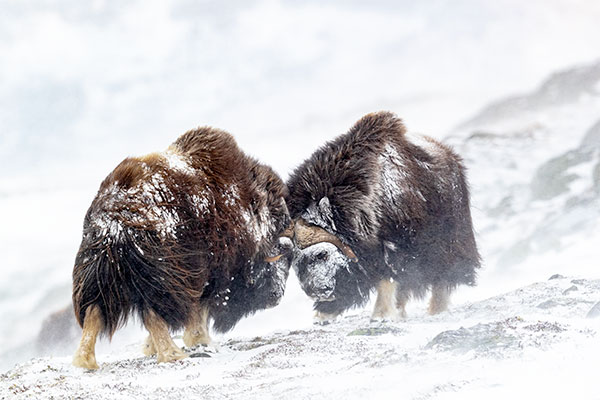 |
|
 |
|
 |
|
 |
|
|
I managed to get away four times in 2020, the first was back in February before the covid situation had fully taken grip and was still only a news item when reporting on China. My first trip was to Dovrejefell in Norway, to see and photograph the Musk Ox. Shortly after returning, I visited the Outer Hebrides and was on the island of North Uist when the first lockdown was announced. For many months, my photography was limited to daily walks and short vists out, but in August, I got the opputunity to do a weeks guiding work in Speyside during which time I did two illustrated lectures and led some guided walked during a particuarly good year for the lovely purple heather. My final trip was to Islay and Jura during the autum were we saw good numbers of Deer, Barnacle Geese, eagles, and the iconic Chough. We stayed at Port Charlotte and the fourth image above is of Port Charlotte lighthouse during one of many storms that coincided with our visit. |
|
| One thing that I have managed in 2020 is quite a few days within a reasonably close driving distance, and dring this time, I have concentrated n two main subjects, the first of which was British Orchids, and then later in 2020 after the end of the orchid flowering period, I moved my photography focus onto fungi. I was pleased with both of these two subjects including new species seen along with previous species seen and photographed again. Below is a very small selection of well over 100 new macro images from 2020. | |
.jpg) |
|
.jpg) |
|
.jpg) |
|
|
The fungi above is the "Devils Finger Fungi" which I have wanted to see and photograph for quite a while, I was pleased to come across a few of these in early October, but for some reason, I never got around to updating either my gallery pages or this blog with any 2020 fungi images until now. Indeed it has been quite a while since I have pdated any of my gallery pages as most updates are either on this blog page or on social media. If Leicestershire continues in the government covid tier four status into 2021 I may have to take this opportunity to add a long needed update of my online gallery pages here on my website. Watch this space !! |
|
|
|
|
| Friday 25th December | |
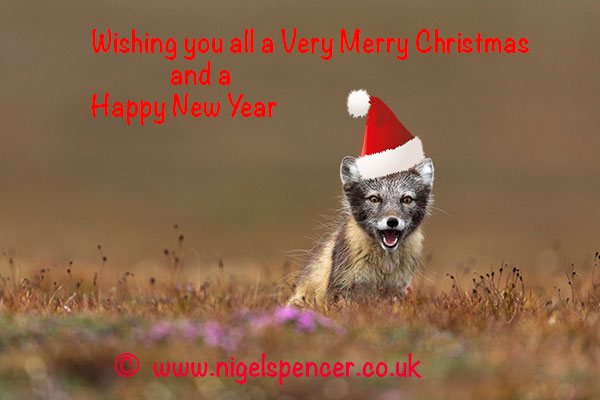 |
|
|
|
|
| Friday 11th December | |
| The View From Above | |
|
Like many people, I am fasinated by the "birds eye view" and despite the fact that I have been very quiet over recent months here on this blog, I have reguarly been out with my drone. This is something that I probably not mentioned previously on my blog or indeed elsewhere on my website. But with the more recent availably, price reductions and reliability of drones, iI purcased one for myself earlier this year. My plans for my drone included various fights to many locations during 2020 and included various coastal and boat inspired views. But during lockdown and the subsequent travel restrictions, none of these has been possible (other than a few hours of drone photography on North Uist during March). During the past few months, I have spent quite a bit more time flying and have found it increasingly enjoyable. It is an activity which I can fairly easy progress from my local area indeed I have found several locations to launch the drone which have been near to my Leicestershire home. It has the added benefit of getting me outside in the fresh air and it is also fairly easy to keep a large "social distance" from others. As a result, I have increasingly spent quite a few hours practicing both flying and the associated arieal photography as well as home study both online and formal training. Progressing this to the next level has been an obvious next step in this new journey, therefore I am really pleased to report that I have recently passed my Civil Aviation Authourity Drone Pilots training. This undoubtedly has increased my skills, knowledge, and the law. But it also opens up some new opportunities for 2021 and beyond. |
|
.jpg) |
|
.jpg) |
|
.jpg) |
|
.jpg) |
|
| When time allows, I will be adding a few images here taken from above. I am also really looking forward to using the done much more and in some new locations (fingers firmly crossed for some great drone opputunities in 2021). | |
|
|
|
| Tuesday 17th November | |
| Two Recent Islands | |
|
Over the years, I have visited a large number of islands around our coast, and regular readers of my blog will know this includes quite a few of the Scottish islands. This has been boosted by my work as a wildlife guide in the Hebrides and my"Around Britain" sailing trip last year. Sometimes I have spent many hours on these islands, occasionally several days. Sometimes I have been very fortunate and have managed to visit the islands many times, for example I have visted islands such as Cana, the Shiant Islands, Eigg, (and many more) at least a dozen times each. A few of the islands, I have only visited for a few hours, and this included the island of Islay which we visited for an afternoon in may 2019 as a stop over before crossing over to Bangor in Northern Ireland. At the time, I remember thinking what a great little place it was, and decided that I would return when I could. With so many destinations unavailable this year, it seemed like a good idea to see what islands were available to visitors this autumn, and I have just returned from ten days on Islay along with a trip to Jura which is a new island for me and is also well worth a visit. |
|
 |
|
| One of the many Barnacle geese which we saw during our travels around Islay. Although we spent ten days on Islay and Jura, there was lots of things that we did not get to do (some of these were due to the wet and windy weather) but both of these islands are on my list of places that I would like to return to in the future. | |
 |
|
|
|
|
| Monday 9th November | |
| January 2021 - The Badger Trust | |
| A few months ago, I was contacted by the wildlife charity the Badger Trust regarding some of my badger images that they had seen on Instagram. They asked if they could use one for their 2021 Calandar, I obviously agreed as I like to help support and promote some of the smaller charities that do important work helping with the conservation of our species and habitat. | |
| As a result of sending them a few images to chose from, they selected this lovely badger which features as their "January image" in their 2021 calendar which they kindly sent me a copy which the postman dropped through my letterbox. | |
 |
|
|
As a result, the three charities that are using my images in 2021 are: The Badger Trust, Butterfly Conservation, and The John Muir Trust. Best wishes to them all for their ongoing conservation work. |
|
|
|
|
| Sunday 18th October | |
| Follow You, Follow Me... | |
|
Over recent years, our images seem to find different homes, a fw years ago, many people including myself spent a bit of time looking at websites of both our friends and of other well known photographers as well as several organisations. This was a good place to see what is happeneing in terms of photography and of news. But times have changed and like many people, my visits to websites seem to much less frequent than previous years, this is also the case in these strange covid times when more and more we are encouraged to do more things online and remote from actualy meeting real people. But over recent years the growth of social media (which actually is often less than social, and often seeis people having a moan about things or worse still having a moan about what other photographers are doing) has really rocketed. I guess that I have been sucked into this trend, and a number of years, I have used facebook as a platform to post images of wildlife, my travels, my sailing, alng with various work such as my visits to the Hebrides as a wildlife guide, or to promote my italks to camera clubs and wldlife groups. Over more recent months, I have also used Instagram a lot, and I am approaching my 50th post on this image based platform. But one thing that seems to happening more and more is the quest for friends, follers, likes, etc. We all know a few people who spend their cash purcasing instargam followers and facebbok friends, and I guess some may see this a quick way to fame, after all, it always looks impressive when someone as over 10,000 followers on Instagram, although it would be wrong to assume that everyone who has larg numbers of followers or likes has actually purcased them. But increasingly I am getting lots of Facebook friend requests, its becoming increasingly the case that many people want to friend other hotographers inorder to reach their 5000 friends on facebook. I admit that I do enjoy ooking at facebook and I am often happy to become "a facebbok Friend" of ther photographers. But the next thing that happens is usually a flury of requests to rhen like / follow their various photography buisness pages. Instagram can be even less transparent when it comes to people reasons to like, comment, of follow you, and there is a huge rise in the "follow you, follow me culture". I am endlessly getting people follow me on Instagram only to rhen find that a few days later they "un follow" me bacase I have not followed them back. |
|
| Just incase anybody has read this far, and wants to look at my social media, the feeds are at: | |
| facebook: https://www.facebook.com/nigelspencer17/ | |
| Insta: https://www.instagram.com/nigelspencerphoto/ | |
| And here is a few of my images that have featured on my social media feeds (as well as featuring here on my website) | |
---59O6566-(1000px).jpg) |
|
 |
|
 |
|
 |
|
 |
|
 |
|
|
|
|
| Wednesday 30th September | |
| Crocus In Autumn | |
| Several weeks ago, I visted a well known site where there were many thousands of Autumn Lady Tresses in flower and entited my subsequent blog post "signs of Autumn". Since my visit, I have photographed quite a range of other plants along with Autumn Crocus and I really feel that I could also have entitled this post "Signs Of Autumn". But I guess it may be too early, even though we have now passed the equinox, lets wait and see what the weather brings in the next fewweeks, But I have already seen and photographed some fungi, so it might well be the case that Autum is heading our way rather quickly. | |
| Crocus are generally regarded as a spring species, indeed they usualy flower shortly after our snowdrops and are always an eagerly awaited sight with their lovely colourful display to brighten up the cold dark days at the end of winter. | |
| But as well as "regular snowdrops" in winter, we also have "Autumn Snowdrops" that flower during September & October, although I did not photograph any of these duing a day out with my camera yesterday. In adition, we also have "Autumn Crocus" which also come into flower this time of the year. They are much bigger than our winter crocus, but I spent an enjoyble couple of hours pointing my camera in their direction. | |
 |
|
 |
|
 |
|
|
As stated above, I am not sure if this is actually the start of Autumn or not, although this is my second flower species photograhed in recent weeks with "Autumn" as part of its name. But whatever weather we do get during the next few months, I have got plenty of days planned for some trips out both local and in other British locations, so hopefully very soon my memory cards will contain a few more flowers, some more fungi, along with a few seascapes. Fingers crossed that after all the issues that we have all faced in 2020, that there is a good final three months of photography ahead. None of us has a crystal ball, and time will tell. |
|
|
|
|
| Thursday 17th September | |
| Supporting The John Muir Trust | |
| There are many great wildlife charities and it is impossible to find the time, finance, or commitment to support them all. But over recent years, I have chosen and supported four of our smaller charities with a mixture of small ongoing financial support, along with promotional help with images. The four that I have chosen are: Butterfly Conservation, The Whale and Dolphin Trust, The Badger Trust, and The John Muir Trust. | |
|
As a result, both the Badger Trust are using one of my images in there 2021 calendar and the John Muir Trust are using one my images for the second year running in their 2021 calendars and desk diaries. The John Muir Trust is also using two of my images as part of their 2020 Christmas card collection. |
|
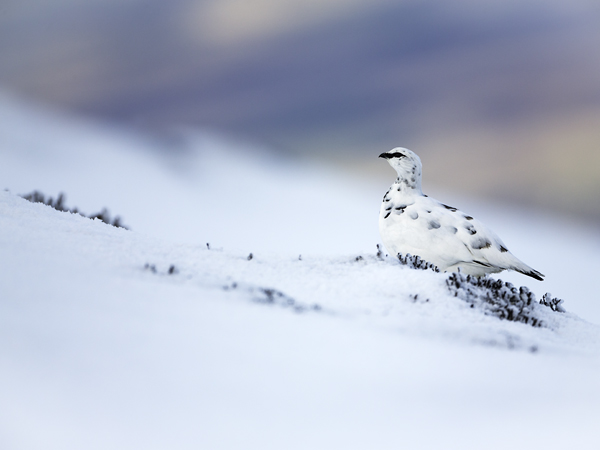 |
|
| The two images in the John Muir Trust are using on their cards are the Ptarmigan and the Golden Eagle, they form part of a collection of six wildlife and landscape Images featured on their 2020 Christmas cards. | |
 |
|
| This image of a Beaver is featured in the John Muir Trust "Wild Nature Diary" 2020 | |
 |
|
|
I have also teamed up with the John Muir Trust on an exciting collaborate project which will run during early May 2021 for seven weeks, and am looking forward to posting more details here on my blog in the near future. It is great to be working with this fantastic charity that is doing excellent preservation work across Scotland and the Lake District. This project will involve many British bird, mammal, and buttefly species, including Chequered Skipper, crested Tit, and the Badger. |
|
 |
|
 |
|
 |
|
|
|
|
| Monday 14th September | |
| The Three Species Of British "Lady's Tresses" | |
 |
|
|
During the past few months I have been making an effort to visit, see, and photograph many of our wild British wild orchid species, indeed, during the spring and summer of 2020, I have been fortunate to find 12 species of orchids that I have not previously seen. As well as also having the opportunity to photograph thee new species, I have also managed to photograph several species that I had previously seen, so 2020 has been an excellent year for my Bitish orchid Photography. Indeed, in 2020, I also managed to complete my sightings of all of the three British species of "Lady's Tresses" which are traditionally the last of the British orchids to come into flower. |
|
|
|
|
|
Without any doubt, the rarest of the three species is the Irish Ladys Tresses (pictured above) which are found in the west coast of Ireland, along with some of our remote Scottish Islands including Colonsay, Coll, Bara, Tiree, and Benbecula. They were first discovered in West Cork in 1810, and then over 100 years later on the island of Coll in the Hebrides on the Scottish in 1921. After almost a further 100 years, they were very recently discovered on a nature reserve near the mid Wales coast. Like all of the Lady's Tresses, they have tiny white flowers which grow in a spiral around the flower stem. there is usually 15 to 20 of these tiny flowers which only grow to about 15 to 30cm in height. They come into flower in mid to late July and early August and are found in our in peat bogs, marshland, and other damp meadow and grassland areas. They are regarded as one of our hardest British orchid species to find and unfortunately they are endangered across most of Europe. But they remain a reasonably common orchid species in North America. |
|
 |
|
|
Above: Irish Ladys Tresse's Below: Creeping Lady's Tresses |
|
 |
|
|
The Creeping Lady's Tresses is a fairly common species in parts of north west Scotland particularly around the Speyside area. But they can also be found further south, there is a small colony of them near to Holkham in the pine forest in Norfolk very close to the North Sea.
The Autum Lady's Tresses is the smallaest of the three species and generally only grows to between 10 and 15 cm in height. They are a common species and can be found in huge numbers at several sites in southern England, indeed, it is not uncommon for there to be several thousands of these lovely small spiralled white flowers at many locations across southern England during mid to late August. Below: Autum Lady's Tresses |
|
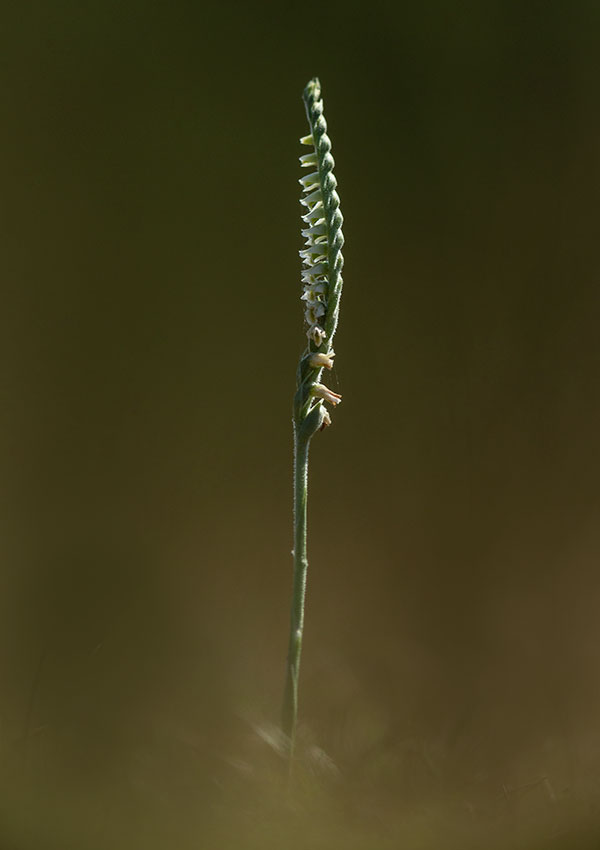 |
|
|
Summer Lady's Tresses There was previously four species of Tresses in Britain but unfortunately the Summer Ladys Tresses (which was first discovered in France in 1798) became extinct here in 1952 after the remaining habitat was lost in the New Forest in Hampshire, it is also extinct in the Channel Islands, Belguim and Holland. Unfortunately they are declining across most of Europe and I will probably need to visit Germany, France, or Eastern Europe if I want to find and photograph these orchids. |
|
|
|
|
| Saturday 5th September | |
| Pink And Purple | |
|
Many things catch our eyes and one of these is colour. I have just returned from eleven day working visit to speyside and during this time one of the things that caught my eye was how wonderful the pinks and purples of our heather are in our native pine woods, and on the moorland. In many ways, its my favourite time of the year to visit moorland and moutain areas, driving from the hotel to various destinations can often be a bit of a drag, but during this late summer period it provides a wow factor with many acres of hillside covered in wonderfull colours. We also did some walking during our visit, this included an ascent of Brearach which at 4252 feet above sea level is the third highest peak in Britain and is also the highest mountain in Britain that I had not yet ascended. Whilst on the high high Cairngorm plateau, we took the opportunity to also ascend to Sgour an Lochain Uaine which at 4236 feet is Britains fith highest point. This was a long day consisting of over 52,000 steps during the ten hours of walking. Throughly enjoyabl (but to be fair, we were pleased to finish by the time we reached our car at the end). Part of my work was guiding and one of these locations we visited was the pine woods at Loch Garten, the osprey centre is currently closed for renavations, but the midges were present in huge numbers. Indeed it was generally very quiet with not too many people about during the whole trip, but 2020 has been a bad year for midges and there were literally millions upon millions of these blighters to be found at many of the destinations. We walked sections of the Speyside Way which pass though the pine forrests and along the river Spey, this was very enjoyable, indeed, a week spent walking the length of this famous long distance path could be a good project for a future date. The walk runs from the Moray coast south to Aviemore in the Cairngorm mountains. I also lead a guided walk in Spey Bay, during which time we had great views of an osprey fishing in the river at the point where it enteres the sea. After this we moved west to Lossiemouth where we stood on the sea wall watching gannets diving into the sea searching for food along with a lovely Black Throated Diver swimming along the coast still in its summer bredding plumage. We also saw and photographed several flowers including Bog Asphodel, Bog Orchid, and Coralroot orchid. Due to the current situation in the world, this was my first trip away overnight since March, and although it was a working trip which included some free days, it was very enjoyable. |
|
 |
|
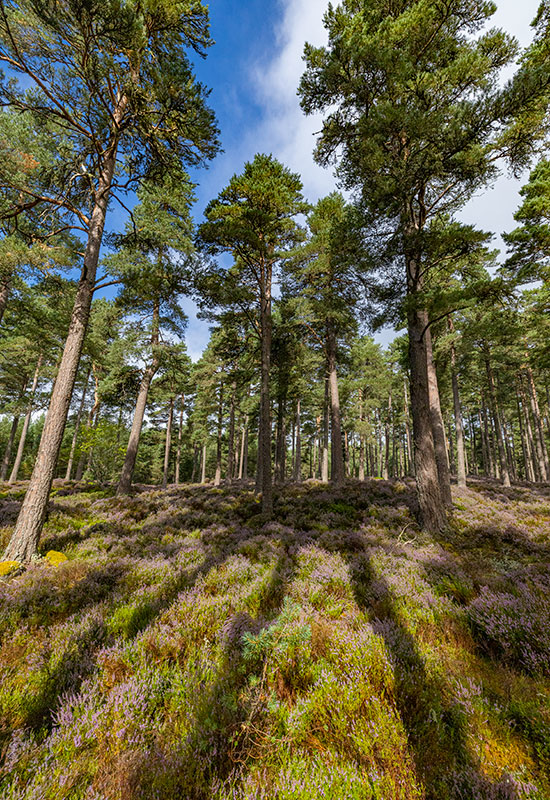 |
|
 |
|
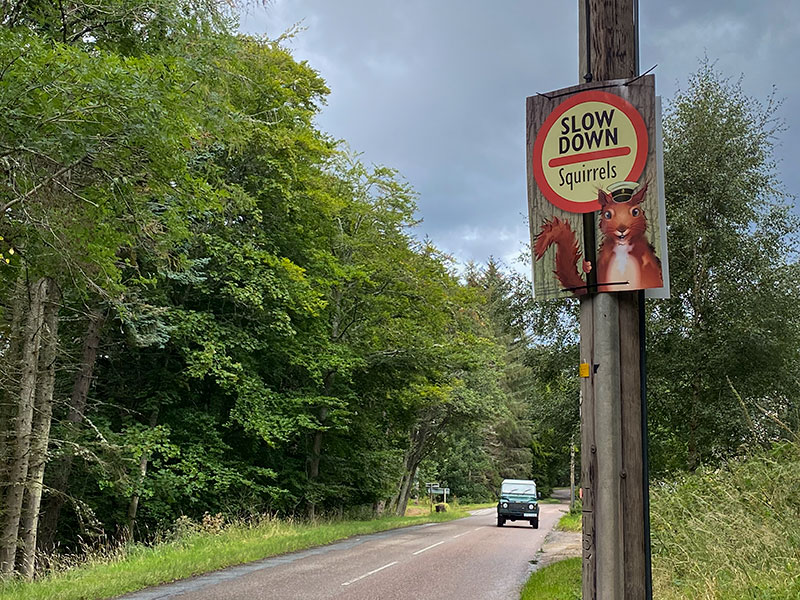 |
|
| Red Squirrels are always great fun to watch and photograph, arguably the best time for this is during the winter months when they had the lovely ear tufts. Indeed like many people, i lik photographing our wildlife in the snow and obviously winter months are required for this. But in many ways you can not beat the backdrop of pink and purple of our heather for a fantastic setting for wathing our native red squirels. Obviously this is also true for many moorland and woodland species including red grouse. | |
 |
|
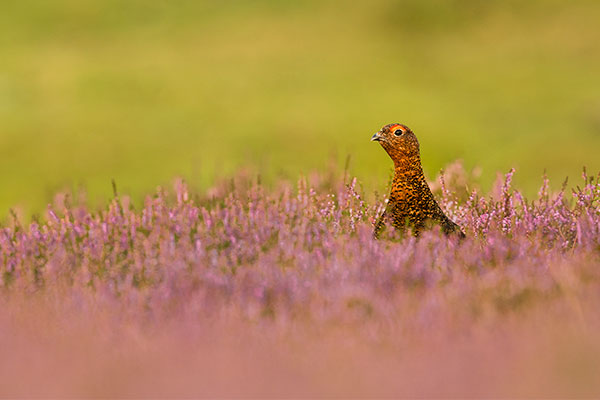 |
|
 |
|
|
|
|
| Thursday 20th August | |
| Signs Of Autumn | |
| Autumn Lady's Tresses | |
|
The last of our British orchids to come into flower each year is the Autumn Lady's Tresse, and although these are a resonably common orchid species in Britain, I had not previously seen or photographed them. As there had been quite a few reports of them now being in flower, I thought it was time to go and find some and point my camera at them. The site I visited was excellent with very good numbers of these orchids showing. It was however a bit windy, and photographing was quite tricky. These are three species of British Tresses, these are Autumn Lady's Tresse, Irish Lady's Tresses, and Creeping Lady's Tresses. As, I had previously seen and photographed the other two species, I was pleased to have seen these to complete a mini set. As it happens, the Autumn Lady's Tresses are probably the easiest of the three to find and photograph. Unfortunately the Summer Lady's Tresses have been extinct in Britain for some while. There were also some tiny Autum Gentian flowers putting on a good display, so perhaps Autumn has indeed arrived. |
|
 |
|
|
|
|
| Wednesday 5th August | |
| "Flowers, Butterflies, and Scotland" | |
|
As mentioned in previous posts, I have been updating my talks so that they have both a fresh content and an element of new images. The most recent of this ongoing process has been the production of two new talks which are: "Wild Flowers & Butterflies Of Britain" and "Wild Scotland" Both these new titles have both a 45-50 minute version and a 90 minute version with a midpoint break. Over the past few weeks, I have had a few organisations cancel their bookings for talks, and this is understandable as it is really hard (and in some cases impossible) for some organisations to meet. But, I am also pleased to say that I already have bookings for three of these new talks. My talks can now be scheduled and shown via zoom or a personal visit depending on the individual circumstances of the organisation and their audience. Indeed I can always change from a visit to a zoom talk at short notice (or vice versa) should the situation mean things need to be changed. Please contact me if this is of interest to you or your organisation. I know its currently hard, and as such I will try and offer a good price to help out and ensure organisations both survive and also are able to offer a good and varied programe as they are able. |
|
 |
|
 |
|
 |
|
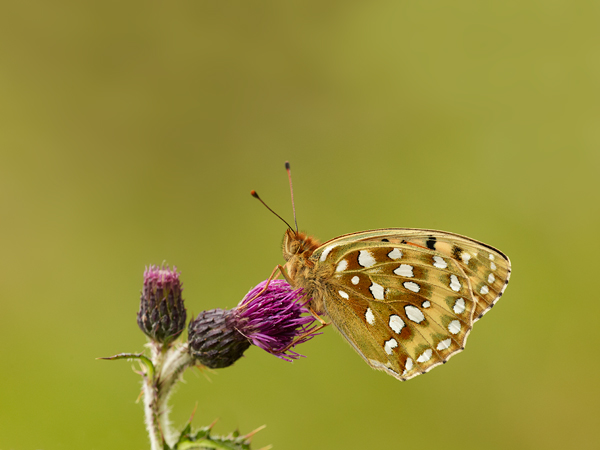 |
|
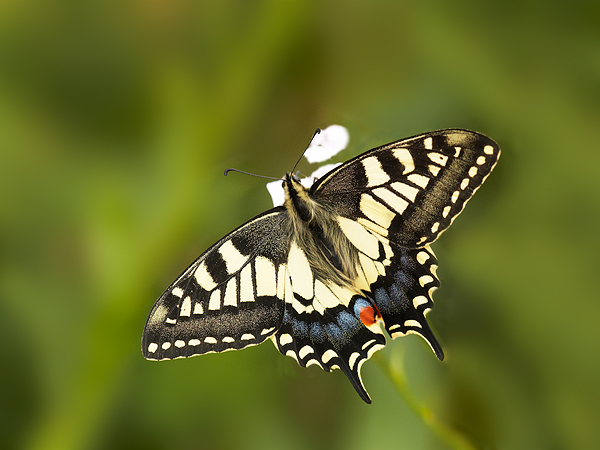 |
|
 |
|
|
The images above are: Vipers Bugloss (a Cotswold speciality), Common Spotted Orchids, wild Snowdrops, Dark green Fritillary, Swallowtail, and Silver Studded Blue from my "Wild Flowers and Butterflies of Britain" talk. Whilst below is a Common Dolphin, Atlantic Puffins, a Red Squirrel in some lovely heather, Black Guillemot, Pied Flycatcher, and the shy Corncrake from my "Wild Scotland" talk. |
|
 |
|
 |
|
 |
|
 |
|
---59O4358.jpg) |
|
 |
|
|
|
|
| Monday 3th August | |
| Unexpected Changes And Unexpected Challenges | |
|
2020 is proving to be very different in many, many ways to what I had expected, both in my personal photography plans, my work, and also things at a personal level. |
|
| Obviously I don't need to explain why these plans have changed so drastically over the past months, the Coronavirus situation in the world has effected billions of people around the planet, and is bad news for everyone who has been effected by it. Everyone including me is very sad for the hundreds of thousands of lives lost. We are all effected in our everyday actions along with the unknown of what the future holds in terms of both "everyday normality " along with how buisnesses will survive. Indeed by 2021, we may well be looking at a very different world. | |
| Having returned home from the Hebrides at the begining of lockdown, I did not venture out much, and kept busy with lots of projects at home. Many images were processed from previous trips and days out along with updating a few talks and other items. | |
 |
|
| Although I have previously photographed all of the British butterfly species, one of my favourites is the Marbled White which is also one of the most photogenic. The above image was photographed a couple of weeks ago at a nearby site which is very close to the border of three counties, Cambridgeshire, Leicestershire, and Northamptonshire. There were also some lovely Silver washed Fritillary and a few orchids to be seen. | |
| Looking at the rest of 2020, I have managed to secure a great opportunity in Speyside in a few weeks time and am really looking forward to the return north. Many of my talks have been cancelled, but I have also attended many online "zoom" talks over the past months. These have been both as a presenter showing some of my images as well as a participant litening to many interesting talks. amoungst these have been: Natures Images, Canon, The Royal Photographic Society, and Lee Valley Nature Photographers. | |
| Plans are being gradually formulated for future months and hopefuly a few more days out and projects will progress. there is a good chance that the next eighteen months will see many of these projects happen here in Britain, but I guess there will be a few more unexpected changes and unexpected challenges. | |
|
|
|
| Wed 22nd July | |
| In Camera Focus Stacking | |
|
I am currently trying out a mirrorless camera which has the ability to semi automate the focus stacking of an image. This process It is certainly much, much easier than the tried and tested method of doing this manually in the traditional method which involved taking an image, moving the focus a milimeter or so, and then taking another image, and then repeating this several more times until it was sharp and therefore all complete. Many of the new camera manufacturers are begining to offer a variety of differing methods of focus stcking functionality to the functionality of their camera bodies. When using many of these, the photographer needs to focus at the nearest point, and then use camera functionality to stack the focus as part of the image capture process. When you return home and down the images from your memory card, these can then be combined in your image software as part of your image processing. Earlier this week, I met up with a photography friend and we visited a local woodland and spent a few minutes looking around to see what Hlleborine species that we could find. It was still a bit early in the season for Helleborines at this particular location, and as a result, many were very small and not yet in flower. But we found a few that were ready to point a camera in thir direction which had also not yet been eaten by either rabbits or deeer. Whilst there, I produced the image below of Broad Leaved Helleborine by image stacking multiple shots in a mirrorless camera. It is certainly very far away from being my best orchid image, but it was good to spend a couple of hours trying something a little different, and the results seemed to have worked out alright. |
|
 |
|
|
|
|
| Sunday 12th July | |
| Splitting The Fragrant Orchid | |
| (Or Photography In Your Wellys - Part 2) | |
|
The people that provide the science and the resulting names of our wildlife are always constantly busy checking and then altering bits and bobs here and there,. As a result the numbers of our species can often varry both online and in reference books. One of the species that defiantly still evoling at a resonably constant rate appears to be the names and seperate information on our British orchid species. Until not long ago, there was a single species well known for and named after its lovely smell, it had delicate flowers and was called "the fragrant Orchid", but now these have been split into three distinct and seperate species, the Chalk Fragrant orchid, the Marsh Fragrant orchid, and the Heath Fragrant orchid. A look at various reference material shows that over 90% of the fragrant orchids in the British Isles live in chalk habitat and are therefore also Chalk Fragrant orchids. This resulted in me doing a bit of a search around my hard drives. I then came to the conclusion that all of my fragrant orchid photography and therefore resulting images was also of the Chalk Fragrant. (This included a few lovely examples which were photographed during the past few weeks at various locations.) Also a result, I decided that I should make an effort and add the "Marsh Fragrant Orchid" as a seperate species into my image collection. Whilst at the location of the Marsh Helleborines last week, I took the opputunity whilst wandering around in my wellys to find some Marsh Fragrant orchids to photograph. These were very easy to locate as there were probably several thousands of these distinctive orchids at this particular location. |
|
 |
|
|
Above is a lovely pair of Marsh Fragrant orchids. But as well as my usual portrait style image, I also took the opportunity to photograph several much wider habitat style images because I wanted a good method to show the large numbers of these at this location. One of these resulting habitat images (without my wellys) is shown below. |
|
 |
|
|
|
|
| Friday 10th July | |
| Photography In Your Wellys | |
|
Not all photography is about sitting comfortably in a lovely warm, comfortable wildlife hide, (actually when I think about it, not many wildlife hides are lovely, warm, and comfortable) but they are certanly a bit different to wandering around a marsh looking for wild flowers. But as I am currently trying to get out a bit more and photograph a few more macro subjects as part of my long term ongoing project with British butterflies and wildflowers, I have over the past few months spent quite a few hours wandering around various fields, flower meadows and woodlands in search of subjects to point my camera at. This has resulted in quite a few new images which range from rare dark red Bee Orchids (see a previous post) through to one of my favourite British Butterflies, the Marbled White. But one species which for several years, I have wated to photograph is the Marsh Heleborine which is one of our very colourful British orchid species. In order to do this, I had to find a location, and after chatting to a few friends, I visited a very boggy marsh and went for a squelch around in my welly boots. It was a sucsessful few hours, and the images below are a few of the results. |
|
 |
|
 |
|
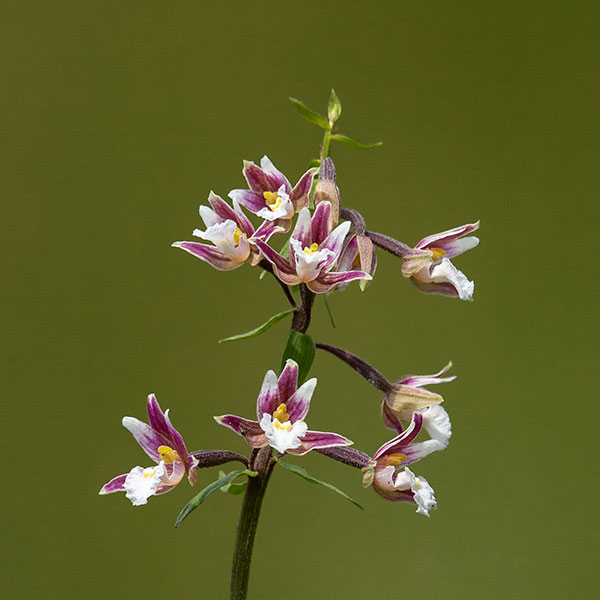 |
|
|
|
|
| Thursday 18th June | |
| Bee Orchids | |
|
Over recent weeks, I have had the oppurtunty to get out a bit more and search for a few orchids to point my camera at. This time of the year, I am always on the lookout for Bee Orchids. As I have a couple of new variations of Bee Orchids recently, I thought I would add a few here. The images below are a mixture of images from my hard drive and images from the past week or so. |
|
 |
|
 |
|
 |
|
| The above three images are "standard Bee Orchids" and show the lovely detail of the bee orchid flowers at there best. | |
 |
|
| Above is a rare bee orchid with a red body, taken in Buckinghamshire. | |
| Below is a "Wasp Orchid" which is a variation of the bee Orchid. | |
 |
|
|
|
|
| Friday 5th June | |
| New Talks - Via Zoom | |
| Islandeering In Scotlaand | |
|
Over the past few weeks, I have been working on some new talks, along with updating one or two of my current taks. Also during the past few weeks, we have all got a lot more used to doing a lot more via new technology and online platforms, and whilst I dont particuarly want to advertise a particualar solution, the "meetings via Zoom" has really taken off, and although i was a bit sceptical, I have really enjoyed using it recently. Every week the royal Photographic society hosts and online talk and i have enjoyed these, i have held a few video chats with various friends, have been invited onto a few zoom talks from other organisations, and have showed some of my existing talks to a few camera clubs. |
|
| There is no doubt that things are not going to get 100% back to normal in the near future and this new technology is here to stay. Therefore I have taken the decision to add two or three new talks to my portfollio of talks. I have also decided that at least two of these talks will only be available via the online Zoom platform for at least the remainder of 2020. | |
|
The first of these, my new talks concentrates on some of our lovely Scottish islands and inludes a selection of travel, facts, history, visiting information, along with my usual mix of wildlife and coastal photography. The talk is called. "Islandeering In Scotland". This completely new talk covers quite a few of our islands including: Eigg, Rum, Lewis and Harris, The Shiant Islands, St Kilda, Fair Isle, Soay, along with several others. I have done a couple of versions of this talk with different durations thus giving organisations choices according to their needs. If anyone would like to make a booking or like further details, then please get intouch. Currently I will be offering a discount to any organisations that have previously booked or hosted one of my talks. |
|
 |
|
 |
|
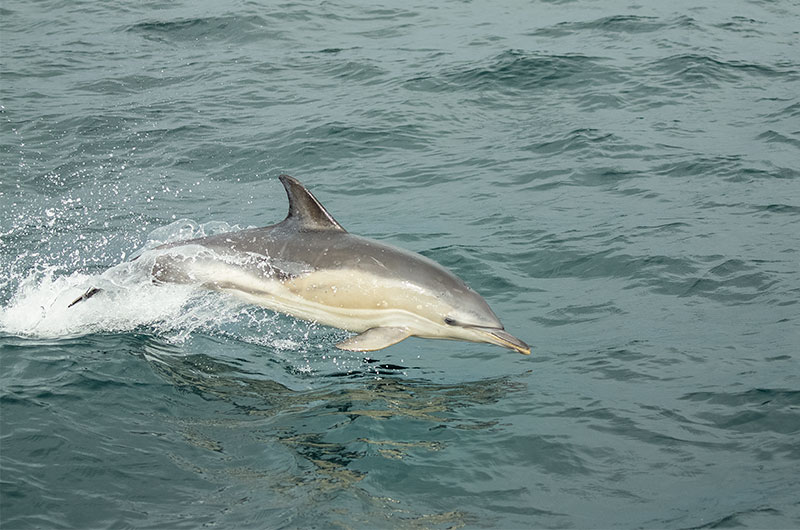 |
|
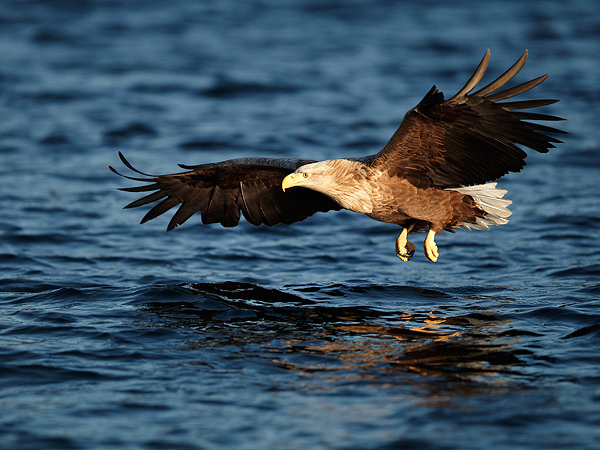 |
|
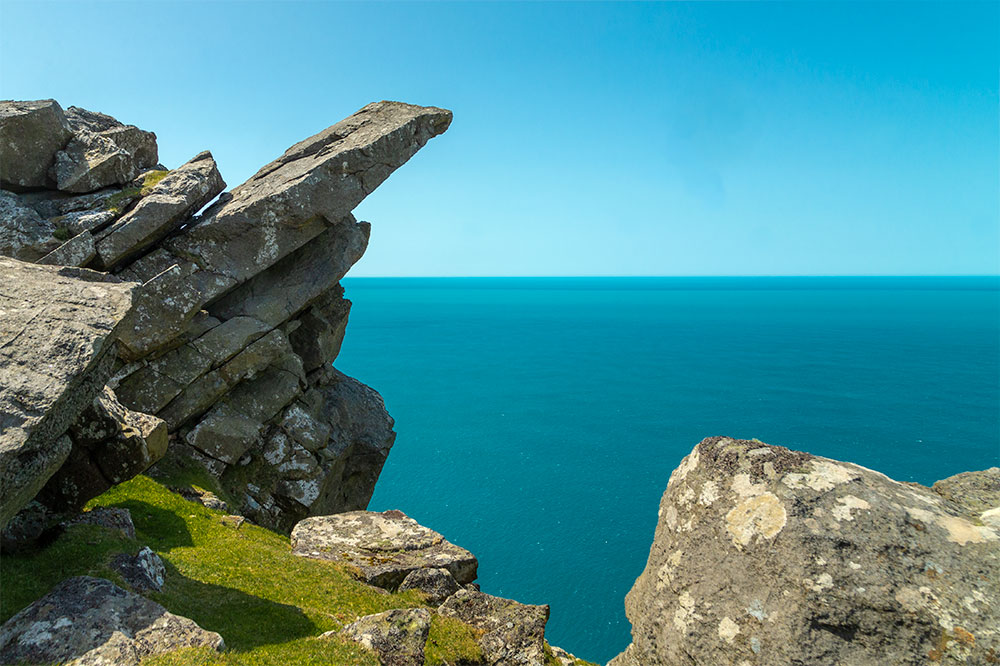 |
|
 |
|
 |
|
|
|
|
| Wednesday 3rd June | |
| A Different Type Of Birds Nest | |
| Over the past few years, i have often been either working away or doing a photography project during the orchid season in Britain, but as everyone will know this hasnt been the case this year and i have been safely staying at home. Indeed over the past while, i have not been out much at all, but have prefered to stay at home and concentrate on the many items that have need to be updating. It has been surprising just how much i have found to do, and in some ways its been very productive. | |
| But as the lockdown has eased, along govenment rules and advice on what we can do, i have now decided to try and get out a bit and see what i could photograph. As always, the target list i always going to be a much longer list than what i am able to achieve. But thats fine, its good not to be short of both ideas and motivation. | |
|
One area of photography that i have really wanted to concentrate on for a few years has been more images of british orchids. During the past week or so, I have processed a few images that were lurking on my hard drives including a few orchid images that have long since been forgotton. but a few days ago, I was given some information abot a good site for Birds Nest Orchids, and therefore paid a visit. These orchids are certanly a bit different from our "normal" orchids in as much as they don't have any chlorophyll and are therfore lack colour. they appear transparent and a bit brown and yellow, looking very simular to Bloom Rape. They get their name from the tange of their roots which is suspossed to look like a "birds Nest". They live in our forrets, where they grow as a parasite onto the roots of other trees and then get their energy from the host tree which enables them to grow. |
|
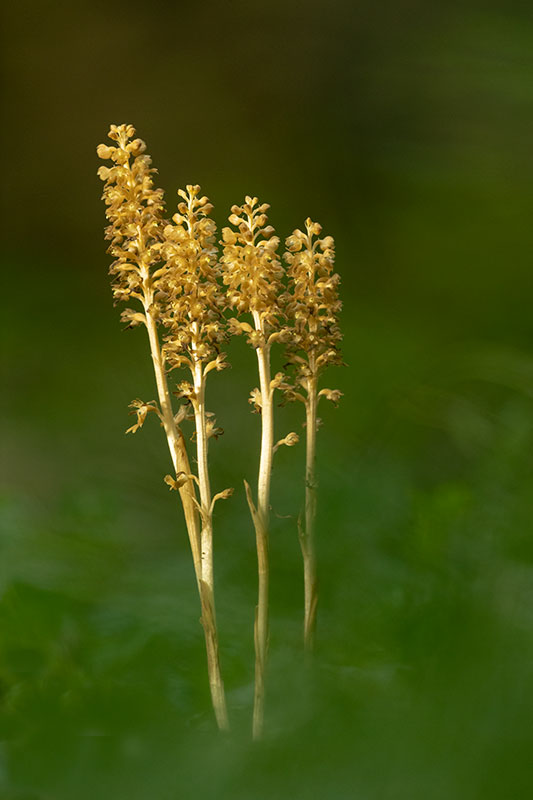 |
|
 |
|
|
|
|
| Monday 18th May | |
| Islandeering On Valley | |
| Christmas seems quite a few weeks ago, but one of the things that I was pleased to recieve was a copy of the book "Islandeering" which was written by Lisa Drew. | |
|
The book is all about the many ilsands there are scattered around the British coast, and while i have many books in my book collection, and I dont use this blog to publise other peoples products (perhaps I should have made a carer of being a YouTube influencer). I have enjoyed reading this great book that Lisa has written. One of the reaosn for that is clear, with my photography, time of various boats in British waters, and love of exploring remote places, this book fits very well into these pastimes (and in some cases income streams). It has many great islands listed along with various maps and routes, and it is certainly going to open up a few new islands for me that to be fair, I didn't even know existed. |
|
|
I do not keep records of everything, as i had walked up many of the scottish Munro's before i started to list them and equally, I had visited many of the islands around the british coast before i decided to make a list of these. As a result, I have still not listed the islands off the coast of either England or wales that I have visited. But I did manage to write down over 70 Scottish Islands that I know for certain that i have visited along with the dates that i have vistied them |
|
 |
|
 |
|
|
One of the islands listed in Lisa's "Islandeering" book is the tiny island of Valley which can be recahed on foot from the north west coast of North Uist for a short time when the tide is out. Clearly a visit takes a bit of preperation, but with the technology currently available to all it is very easy to find tide tables online and then work out the time window that is available each day to then allow you to make a visit. Whilst staying on North Uist a few weeks ago in march of this year, I therefore took the opputunity to walk across the sands and visit this interesting little island that i had previously not visited. The time window is obviously going to vary each day as the tides change, but we chose a day when the tides start going out early morning so that we could arrive at the start point relatively early and then walk across as soon as the sand was exposed enough for our vist. It was a fairly cold day, and the wind certainly whips through the chanel between North uist and the island of Valley, but we recieved an inquisitive welcome from the resident long Horned Cws of the island. |
|
| With the current Covid 19 situation i suspect it will be quite a while before permissions are given to return to the Hebrides, indeed as i sit safelky at home in Leicestershire writing this blog update, I was due to be on the Island of Barra this week. But these things happen and there is nothing that we can do about this 9other than stay at home). But I still have my fngers crossed that later in 2020 i will be able to return to the hebrides to spend at least a few weeks of the season working as a wildlife guide. I also have my fingers crossed that my plans for a couple of weeks later in 2020 doing my own thing will also be able to happen, after all, there is still quite a few new islands tht i would really like to visit and add to my islandeering total. | |
|
|
|
| Monday 11th May | |
| Garden Phesant | |
| The last few weeks has clearly been very different for many people and this is not something that i will be writing about specifically as there has been countless millions of words written on this subject on a great deal of websites all over the world. Therefore my blog will concentrate on the impact on my plans along with what it has meant for me rather than any comments on Covid 19 on the wider world. | |
| From a personal point of view, my plans have obviously changed considerably and many of the things that i was scheduled to do during 2020 have either been cancelled, changed, or put on hold. I had been due to return to the Outer Hebrides in early May to do some seabird survey work. This was to be something new for me and i was really looking forward to this opputunity along with visting a few new islands. But obviously I hoping to visit this great locatiuon again in the near future. | |
| Like many people the result of the situation is to point my camera at whatever wildlife i find in my garden. the title of this post is "Garden Phesant" and over the past few weeks, i have been very fortunate to have seen some great wildlife in my garden including phesants, Red Legged Partridge, along with the more common species such as both Green and Great Spotted Woodpecker, Robins, etc. etc. | |
 |
|
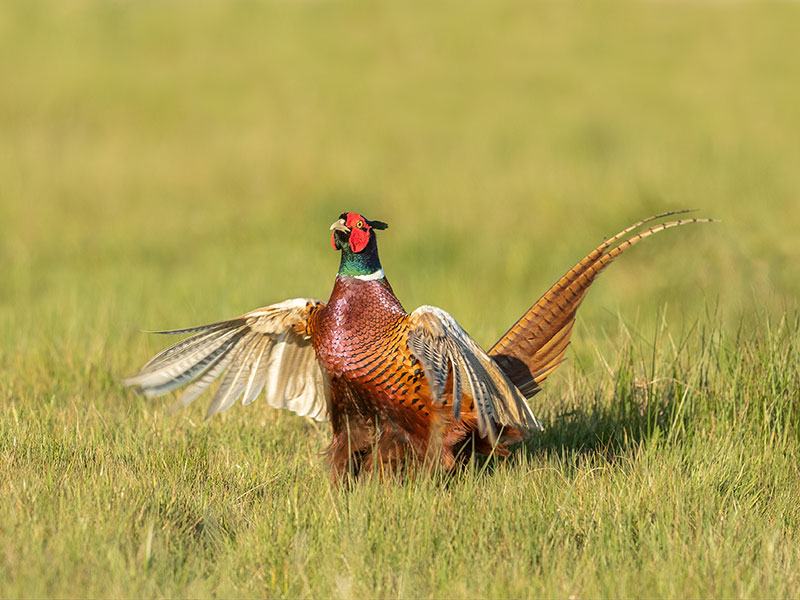 |
|
| The two phesant images above were not photographed in my garden, but as i was standing in my garden when i took the photographs, i feel its a reasonably fair title to this blog post. There is a group of about six phesants that seem to be spending many hours wandering about in the field behind my garden and sometimes they come close enough to get a few images. | |
| It has also been really good to watch a barn owl flying around the same field, although not as regular as the phesants, and i have managed a few images, but nothing spectacular. I have also seen a few Muntjack Deer, but they remain firmly to far away for me to point my lens at them. But fingers crossed for a few images of both Muntjack and barn owls over the weeks ahead. | |
|
|
|
| Friday 17th April | |
| Buzzards, Owls, And Other Raptors | |
|
One of the great things about spending a week or so in North Uist and the nearby islands of Bebecula, South Uist, is the numbers of birds of prey that you see on a resonably regular basis both driving around the island or when out walking. This is clearly not lost on the tourist community which has a "Bird Of Prey Trail" which lists various places to visit and hopefully see these great birds. During our two weeks in these islands in March we saw many Buzzards, Short Eared Owls, Hen Harriers, and Kestrals. Obviously some were closer than others in terms of photographic opputunities, but it was great to see so good numbers of many species in a relatively small geographic area and time window. |
|
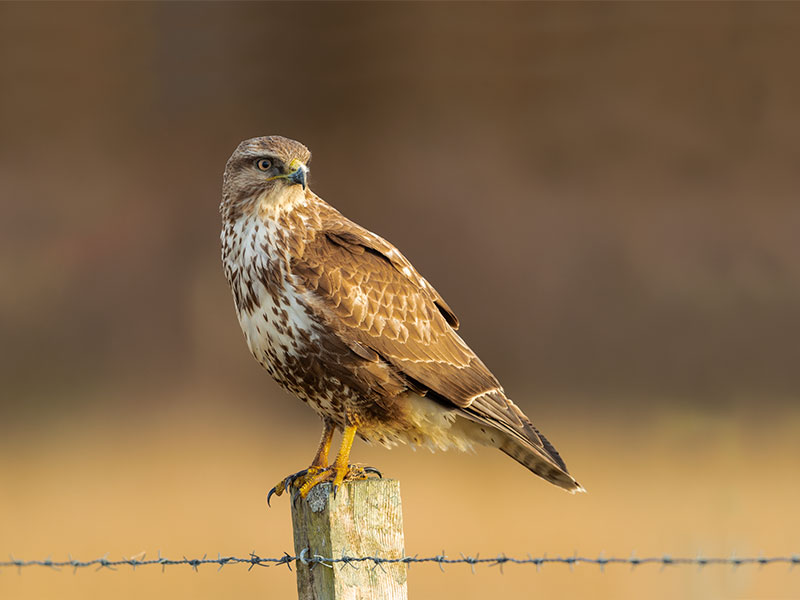 |
|
| This Buzzard was certainly not camera shy which is very unusual for a buzzard) and stood very nicely on this fence post in North Uist. | |
 |
|
|
|
|
| Tuesday 31st March | |
| Good To be Back In The Hebrides | |
| The opputunity arose to spend a couple of weeks in the uter Hebrides based on the lovely island of North Uist. Obviously an opputunity like this is far too good to turn down, and i have just returned for two really enjoyable weeks visiting a few new islands, climbing a few hills and generally enjoying an early spring break. | |
 |
|
| Above, the Clansman ferry which is the route we took from Skye out to North Uist and back, whilst below is one of the many signs asking drivers to be careful of the Otters. these signs always attract tourists and photographers, so i thought why not also take a photograph of them!! | |
 |
|
 |
|
| Above is the view from the summit of Euval which is the highest point on North Uist, although its not a high mountain, it certainly has the high mountain feel along with some truely spectacular views out across the mini lochens below. | |
|
|
|
| Monday 9th March 2020 | |
| A Very Cold Week In Norway | |
|
I have recently returned from a fantastic widerness experience in the Norway camping in the mountains of Dovrefjella national park. It would be fair to say it was increadably cold, but wow, what a fantastic experience. Our main target species were Musk Ox and I am pleased to report that we saw reasonable numbers of them and managed a few photos of them living in the harsh high mountain arctic environment where they make their home. |
|
 |
|
|
Above, is an image of our campsite in Norway, a great wilderness experience. It is unusual to see an image of me on here, usualyy I take the trouble to ensure that I am behind the lens rather than infront of it. But below is an image of me walking in the arctic conditions in Norway. |
|
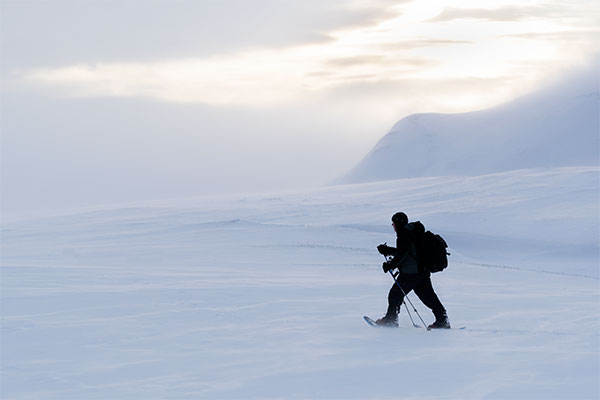 |
|
 |
|
 |
|
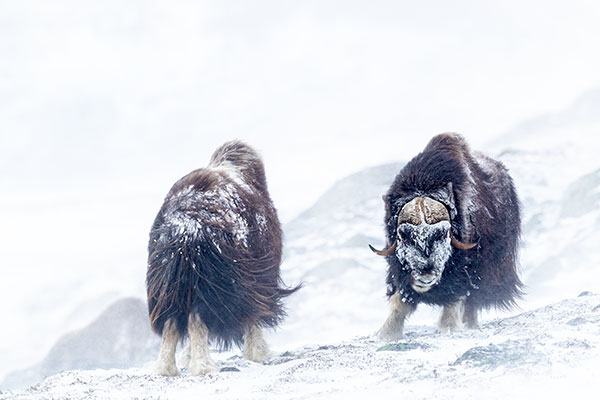 |
|
 |
|
 |
|
|
|
|
| Friday 21st Feburary | |
| Sucsess in Royal Photographic Society 2020 Nature Exhibition | |
|
After my sucsess last year in the Royal Photographic Society Nature exhibition, I thought I had better have another attempt in this exhibition / competition this year. My results have now been recieved, and I did not do as well as last year, but, i guess that statistically I may never do as well as i did in their 2019 competition. I am however really pleased to report that of the four images that i entered, the image below of a Red Grouse recieved a score of 15/15 which was great news and was also the winner of a selectors award. So obviously very pleased with this result and also pleased that i took the trouble to enter their competition, particuarly as i only entered about 90 minutes before the dealine for enteries closed. Better late than never, certainly worked well for me. |
|
 |
|
|
|
|
| Tuesday 21st Jan | |
| A Quiet Few Weeks | |
| With the terrible weather we have been having of late, i have not been out much with my camera recently, other than a visit to Cambridgeshire at the weekend where several good birds were seen and photographed including this lovely little stonechat which put on a great diplay for the camera for long enough for some images to be taken. | |
 |
|
|
|
|
| Thursday 2nd January | |
| What Is My 2020 Vision | |
|
As both a new year and a new decade start, there is so much going on in everyones lives, life seems like a mad rush to the finish line with lots to pack in during the journey. But as we start this new decade, globally most people have started to realise this is also the start of a huge new challenge. |
|
 |
|
|
My persoanal plans and projects for 2020 involve a continuation of many of my longterm themes from previous years. The obvious conservation issues highlighted above will obviously form a big part of my this (in the same way that it needs to fill a big part in the thoughts, concerns, and actions of everyone. Indeed, I try and promote the important conservation message in many ways without directly ramming the need for change along with facts and statistics into every blog post, photographic talk, and social media post that I am involved with. This must be the case with everyone and all of our everyday lives as well as our environmental actions must change to be positive actions in 2020 and beyond. |
|
 |
|
| Purple Sandpiper (above) and Barnacle Goose (below) are amoung the many birds that I hope to photograph again in 2020. (below the Barnacle Goose is a singing Snow Bunting which also another bird on my photography wish list. | |
 |
|
 |
|
 |
|
| The view above shows the famous coloured houses of Tobermory on Mull. One of the many islands that i reguarly visit in the Hebrides, this is always a popular stop either on the way to, or on the return from some of the islands further afield. Below is one of the many "further afield" locations, and shows the summit cairn and radio masts on the summit of Conacair which is the highest point on the island of Hirtra which inturn is the biggest island in the St Kilda island chain. | |
 |
|
|
AS well as my plands to see everything above again during 2020, my love of wildlife, travel, boats, and photography will obviously continue in 2020 as these activities are intertwined together which from a personal perspective is really good. My work as a wildlife guide continues, and I am really pleased to be guiding on several trips again in 2020 including trips to some really fantastic islands including St Kilda, Mingulay, the Summer Isles, and many more. Away from my guiding work, I am also visiting the Hebrides seperately to explore a few new areas and I hope to set foot on 3 or 4 new islands, and to improve my image portfollio of both the coastal species and the unique landscapes. The cold areas have been a draw to me and in 2020, I have an exciting new project in an area of the Arctic that i have not previously visited. This will hopefully result in several new species seen and photographed that I have never seen. In someways, this is possibly my most exciting trip in 2020 and I am really looking forward to it along with the resulting photographic opputunities. Hopefully much more about this trip along with many new images will be posted here on my blog later this year. |
|
 |
|
|
Above is an image of Atlantic Puffin which was taken a few years ago, it is one of the common seabird species that can be seen and photographed around our British coasts. It is one of three puffin species that we have worldwide, and the only one of the three that I have seen. I don't want to say too much in this post about all of my future plans, as I feel it is always best for me to use this blog to add recent news news as regular blog updates. rather than too many future plans. But in 2020, I am really hoping to see all three specis of Puffins along with some great new seabirds and marine mammals. |
|
| Obviously I am hoping that 2020 will bring many positive surprises, that I will get out and do more macro photography and come across all sorts of things that are new as well as better images of the species that i have seen before. 2020 is another year where i want to make to best use of the months ahead to continue my personal exploration. | |
 |
|
| From a personal photographic perspective, I am pleased to report that I have another exciting oppurtunity later in 2020, when an established well known gallery in Scotland is showing a selection of my images for a calendar month as a stand alone seperate exhibition. Things are at a relatively early stage and i have plently of planning and organising of my images still to do, but this is something that I am really looking forward to. The above image of a Crested Tit, and the image below of a Chequered Skipper will probably both feature in this exhibition. | |
 |
|
|
|
|
| Wednesday 1st January | |
| Happy New Year | |
 |
|
|
|
|
|
As well as this webpage and my facebook page, I am trying to use Instagram as a platform for showing some of my images. As a result, I am in the process of adding some of my images are being uploaded onto this platform. I may be a bit late and some photographers have already have uploaded hundreds of images and have thousands of Instagram followers. Hopefully, instagram will remain a popular social media site. Rather than upload lots of images at once, when I am relatively free, I try to regularly add one image per day. My thoughts are that I use this as a bit of a showcase site for my photograph, and currently there are almost 200 uploaded. Time will tell, how this pans out and if I can keep this up. But my aim is to certainly try and end up with this a reasonable showcase of my photographic work. |
|
 |
|
| Please take a look at my Instagram pages, and if you like what you see, then please follow me at: | |
| www.instagram.com/@nigelspencerphoto | |
| To view my older blog posts - please use the links above left in my "Blog" menu, where I have divided the blog by the calendar year going back to 2012. |
| Blog History |
|
I used to keep an active blog on my old Website and one of the things I am very keen to do is to get back in that habit and update this blog at least once a month and often more. Please revisit and keep an eye on what I have been up to along with my thoughts. |

